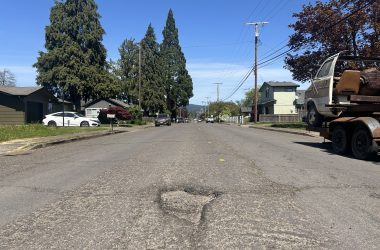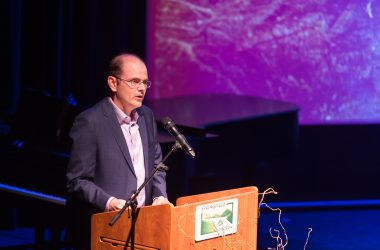The famous line, “If you build it, they will come” is taking on a new and significant meaning in Oregon with regard to critical infrastructure.
For when it comes to expanding broadband into the more rural areas of the state, the sentiment is very much, “If you manage it, they will fund.”
In this case the “you” is our state legislature, and a relatively new statewide entity called the Oregon Broadband Office and the “they” is the federal government.
In recent conversations with leaders of all three of these critical partners, it became clear that we have never been closer to bridging the digital divide in our state than right now. For there are three vital ingredients that are lining up to make this long-dreamt of situation become a reality: Money, will, and bipartisan agreement.
The senior senator from Oregon, Ron Wyden, said emphatically that there is no priority greater for him than expanding rural broadband.
“I will not rest until 100% of Oregonians are connected to broadband, 100% of the time,” he said.
In fact, the money is already earmarked, and Wyden took no time this week to announce that Oregon will receive a record $689 million to expand access to broadband internet to rural and underserved communities — the largest single broadband grant in Oregon’s history.
Such legislation has been a goal for Wyden ever since he joined the senate in 1996. Today, a major piece of legislation that passed last year — the Infrastructure Investment and Jobs Act — creates a vast pool of millions of dollars that are ready to be deployed into many areas of the state where internet speeds are slow and unreliable.
“Understand,” said Wyden, “high speed internet is not a nice to have. It’s critical for healthcare, business, and education and due to the recent passage of the act, we now have the resources to close the gap between the haves and have nots when it comes to broadband.”
For his part, Wyden has already worked to provide $35 million in grants to Oregon that helped local providers like Siuslaw Broadband and Pioneer Telephone Cooperative build out infrastructure to boost speeds. But this year, the feds are ready to pour hundreds of millions into Oregon to connect hundreds of thousands of citizens.
Additionally, Wyden successfully fought to correct inaccuracies in the National Broadband Map that would have cost Oregon hundreds of millions of dollars in grants. The original map incorrectly listed thousands of homes and businesses as being served by broadband, based on false information provided by internet service providers.
Now, all that’s needed is a prudent and well-defined strategy to make sure the money goes to the right places.
Enter the Oregon Broadband Office and a key piece of legislation authored by Ashland democrat, State Representative Pam Marsh.
“Our job really is to prepare Oregon to receive funding from the US Treasury Department and the Department of Commerce,” said Nick Batz, the director of the Oregon Broadband Office. “We are set to receive more than $100 million in funding from these two departments and that will obviously go a long way toward building out broadband where we need it.”
Batz points out however, that the challenge isn’t the money at this point, it is making sure it goes where it’s needed.
“A lot of what we are doing right now is ensuring through mapping and study that areas that can’t get good internet speeds are going to be first in line to receive the money, and Representative Marsh’s bill is a big part of that equation,” Batz said.
For her part, Representative Marsh, not unlike Senator Wyden, has been working for years to get rural Oregon the broadband it needs.
“There’s an area in my district called Greater Applegate and within that region is a very rural school called the Ruch Outdoor Community School, where kids had to go to the parking lot and do their homework because they couldn’t access it at home,” she says.
To help pave the way for all that federal money, Marsh introduced HB 3201. This bill requires the Oregon Business Development Department to provide financial assistance to support broadband access, affordability, and adoption and it makes a particular broadband fund permanent and expands permitted uses of the money in that fund.
In short, it creates the vehicle to receive and use the federal largess heading Oregon’s way.
“This money is mind-blowing,” said Marsh. “It will change everything and at the state level we will be able to manage the grant process and ensure the money is distributed fairly.”
So, when might Oregon see all this mind-blowing money for broadband?
The recent senate walkout did push back the effort, but according to Batz, we could start to see real progress later this year.
“It’s going to take some time, but the good news is that we are closer to closing the digital divide than at any time in our history,” he said.








